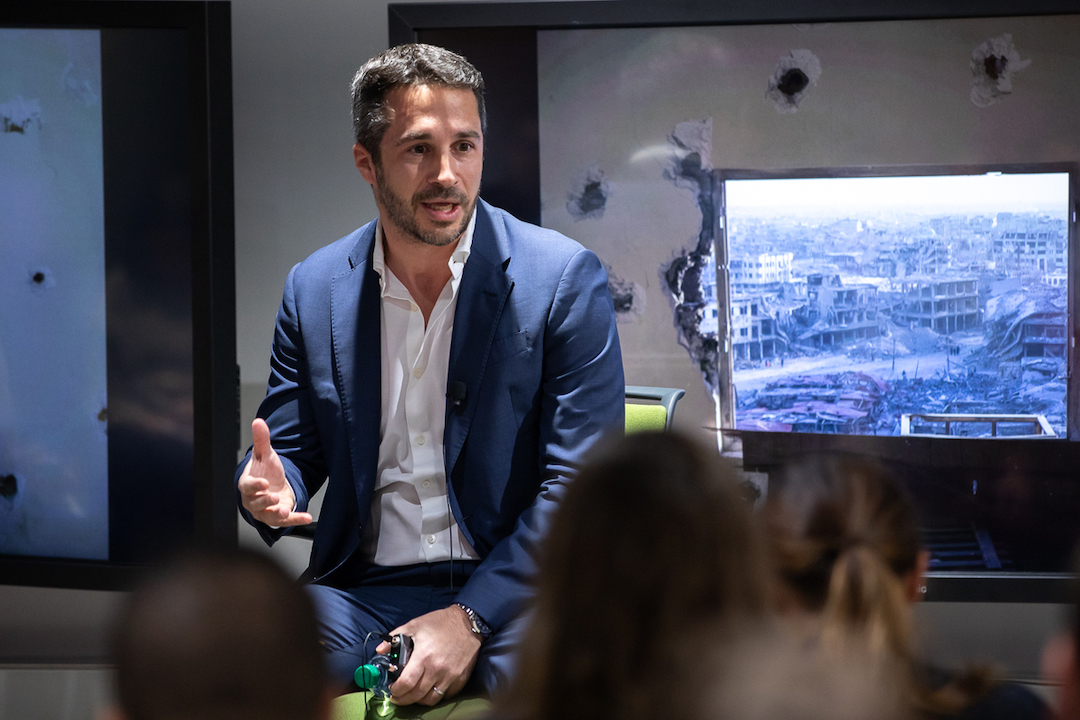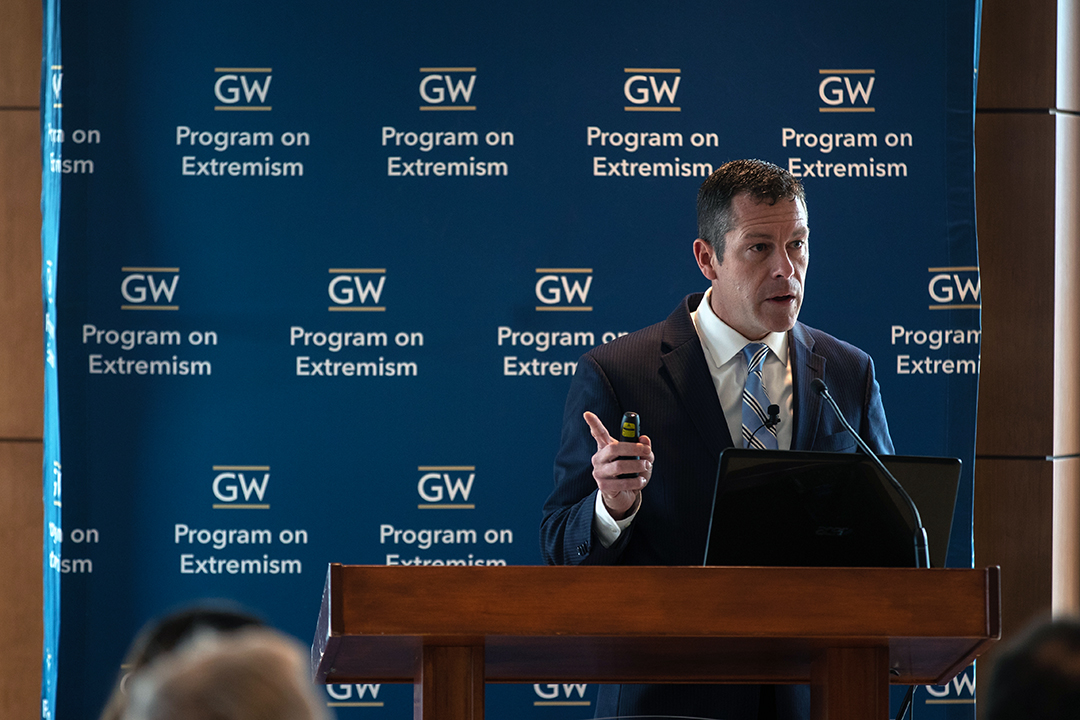
Lorenzo Vidino said GW researchers are working to keep the ISIS Files transparent while protecting civilians who lived under ISIS occupation.
By Tatyana Hopkins
When the terrorist organization the Islamic State, also known as ISIS, made claims to territory spanning Iraq and Syria and declared it a state in 2015, many international media and officials brushed it off as a “so-called state” and dismissed its highly organized nature, said New York Times foreign correspondent Rukmini Callimachi.
“We called it a so-called state because we couldn't fathom that a group as brutal, as murderous and as cruel as ISIS could also be interested in governing and administering a territory,” Ms. Callimachi said. “But I think it is absolutely the case that at some level they were a territory that could be considered as an organized political community.”
Ms. Callimachi led an effort that gathered over 15,000 pages of internal documents left behind by ISIS in Iraq. These documents, which became known as the "ISIS Files," reveal the group's sophisticated and organized governance structure and provide detailed evidence of their economic activities and social atrocities.
The Times announced a research partnership in 2018 with the George Washington University to have the university’s Program on Extremism and Libraries and Academic Innovation division create a virtual public repository for the files, some of which are expected to be publicly available in March.
Ms. Callimachi spoke Thursday at Gelman Library’s National Churchill Library and Center about how the documents have shaped our understanding of ISIS. Lorenzo Vidino, director of the Program on Extremism, moderated the discussion.
“To me these documents are like a window into an unseen world,” Ms. Callimachi said. “They help me check and correct officials’ assertions about the group.”
She said while reports that ISIS was unorganized, had financial backing from foreign countries and relied on oil sales permeated the news media, the documents have proved these claims inaccurate. In fact, she said, the collection of files--land deeds, tax receipts, military strategies, internal regulation support and more--reveal they were actually well-organized and financially self-sufficient.
During ISIS’ occupation of the territory, which lasted until 2017 in Iraq and March 2019 in Syria, Ms. Callimachi said the group ran an “enormous” bureaucracy with at least a dozen agencies. Moreover, she said the documents support research that show that taxes, not oil and drugs, were the group’s largest source of revenue.
She detailed documents left behind by ISIS’ agricultural ministry in Mosul, a metropolitan area in Iraq, that revealed the group’s sophisticated taxation scheme. One spreadsheet showed that they collected taxes worth $1.2 million in a week’s worth of wheat and barley sales from just four of the area’s dozens of mills.
“This is something that [received] very little attention in the international press,” Ms. Callimachi said.
She said the files also document, in detail, the group’s social ills in the territory. Her team recovered intricate accounts of ISIS surveying, seizing and leasing the land of targeted ethnic and religious minorities.
In the future, she said, she hopes the detailed accounts of ISIS’ forced removal of ethnic minorities from their land can help the victims get compensation and recovered arrests records help families gain insight about missing loved ones.
Dr. Vidino said while the files will be very helpful in understanding ISIS’ inner workings, researchers will need to take a closer look to gain those insights.
“These documents acquire value when they are properly contextualized by people with the right expertise,” he said.
Since the partnership was initially announced, he said GW researchers have digitized the documents, worked to translate them and have started creating a user-friendly archival website for researchers around the world. He also said the team has worked hard to “strike the right balance” between providing transparent primary resources for researchers and journalists and not publishing information that could harm civilians.
“While the documents have value, there are also ethical concerns,” Dr. Vidino said. “A lot of people [in the documents] were not ISIS members. They were people who lived under ISIS and were forced to do certain things.”
He said GW’s research team will continue to work with experts to guide their redaction process of the documents, some of which will be released on the website in March.





